Is your ZZ Plant dropping leaves? Here are the top causes on leaf drop on ZZ plants and what to do to help save your plant from this situation!
ZZ plant (lat. Zamioculcas Zamiifolia) is a plant that grows natively in Eastern Africa and is easily adaptable and tolerant to stress.
But even easy care plants can get upset in the wrong conditions. That said, a ZZ plant that’s dropping leaves might come as a surprise, but there’s no need to worry just yet!
Let’s dive into this problem, by first considering the ideal conditions for growing this plant and, after that, the possible causes of a droopy ZZ plant with falling leaves and solutions for the same!
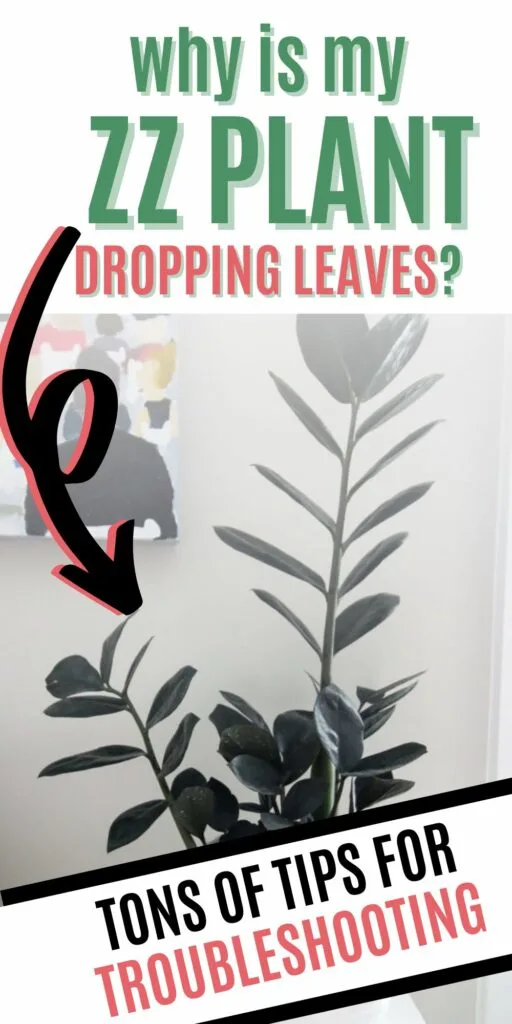
Want more ZZ plant topics?
- Raven ZZ plant care guide
- The Best ZZ Plant Soil
- Why is my ZZ plant getting yellow leaves?
- Why is my ZZ plant not growing?
- Why is my ZZ plant turning brown?
Free printable ZZ plant care guide
Join the (free!) KeepYourPlantsAlive+ community to access this exclusive printable plant care guide! Once you sign up, you can right click & save the JPG care guide. Or keep scrolling for more!
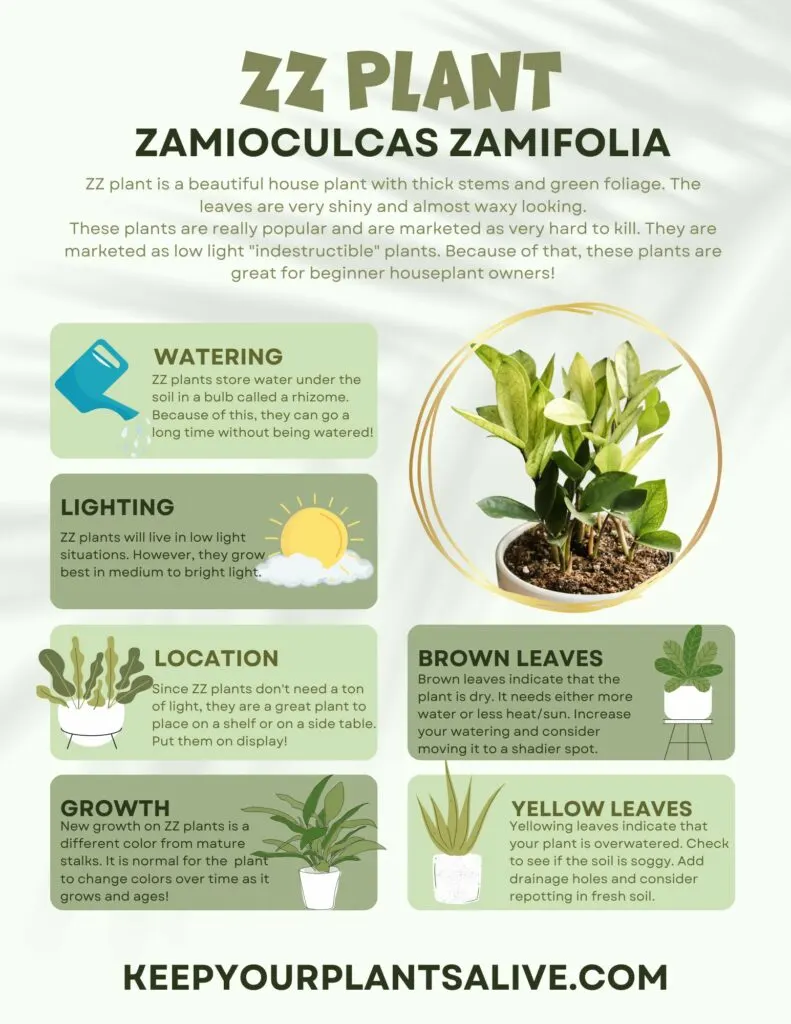
Optimal conditions
The ZZ, also known as the Zanzibar gem, is relatively easy to grow. It prefers:
- rare watering (once monthly)
- indirect moderate light ( near a north-facing window)
- average humidity (40-50 %)
- room temperature
- good drainage
Any variations in these parameters can cause leaf drop.
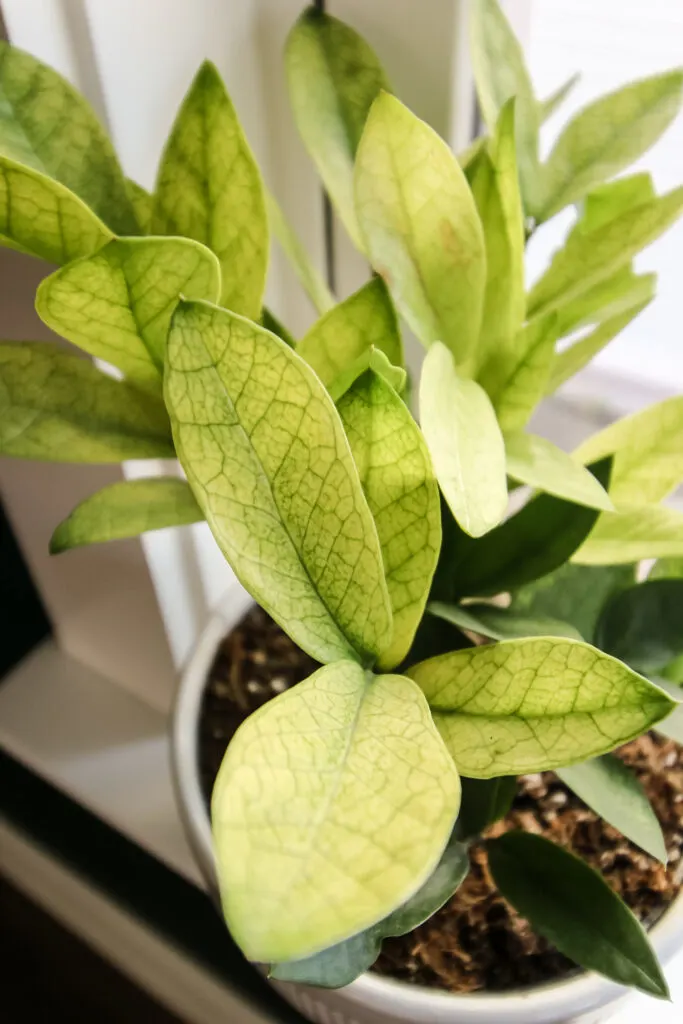
5 common reasons why your ZZ plant is dropping leaves
The most common causes of leaf drop on ZZ plants include:
- overwatering
- underwatering
- improper lighting
- overfertilizing
- temperature shocks
Overwatering
We have already mentioned that the ZZ plant is used to droughts, so its root system is adapted to retain water for longer.
Any extra water, especially if the drainage is poor, can lead to root rot.
The first sign of this problem is the ZZ plant losing leaves, or they become too soft. Everything seems fine with your plant, but the root is suffering.
The excess water reduces oxygen circulation and creates a fitting environment for growing bacteria.
What you should do is examine both the roots and the rhizomes, especially if you have a ZZ plant that’s drooping.
If you notice mushy and fragile parts, remove them carefully with a sterile blade and transplant the plant into fresh soil. Remember to make drainage holes on the new pot.
Here are all of the steps we take to dry out an overwatered plant!
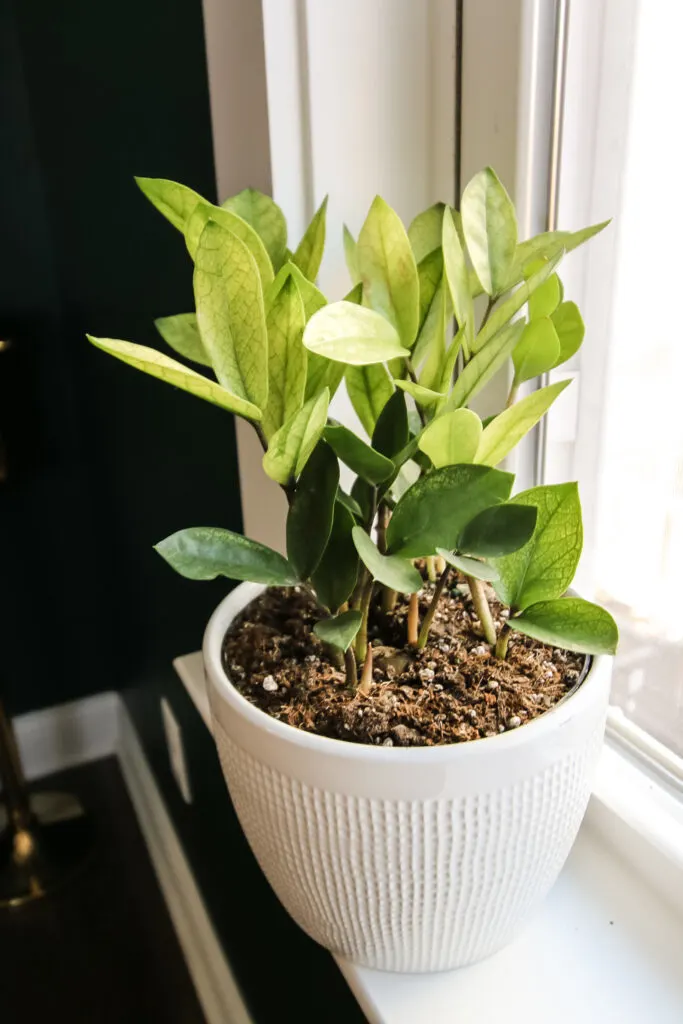
Underwatering
Although contradictory, a lack of watering can also lead to the ZZ plant dropping leaves.
Water deficiency is associated with a lack of nutrients and problems with their transfer to vital plant parts. That’s why you have a droopy ZZ plant in your hands.
As a result, you find fallen leaves around the pot. Dry leaves are actually dehydrated, and the potting mix is dry.
Although these changes do not occur as quickly as overwatering, they can have serious consequences.
Remove any brown leaves, and start a regular watering schedule. When the soil is almost completely dry, you can shower your ZZ with water – and love!
Check the moisture with your finger, a wooden stick, or a moisture meter. Lastly, a crucial point to remember is to avoid overwatering.
Water gradually, with small amounts more often, and then start watering at least 2-3 weeks.
Sunlight exposure
Notice any hints of crispy white or yellow on your ZZ plant that’s dropping leaves? Take note of its location!
You might have set it too close to the sun. The plant leans the leaves opposite the sun, trying to warn you to move it. Relocate it immediately and place it to indirect moderate light.
Otherwise, if the new stems are elongated and “leggy”, they may require more light. If you leave them like that, the leaves will start to drop.
Also, slow plant growth indicates a lack of sunlight. Consider artificial lighting sources if you do not have enough light in the home.
Overfertilizing
I know that fertilization sounds like a good idea to you and may be a solution to specific plant problems. But sometimes excess can be harmful.
In this scenario, overdoing fertilizer is more dangerous than not applying it at all.
The general advice for feeding the plant is to provide it during the growing season when it releases new sprouts.
This notion is valid for the ZZ plant as well. Use a mild fertilizer only once a year, and do not reach for varieties such as fertilizer spikes, which can over fertilize without you realizing it.
What if you’ve already overfertilized? Replace the potting mix entirely and stay away from fertilization for the whole year. After that, start slowly, ideally once to twice per year.
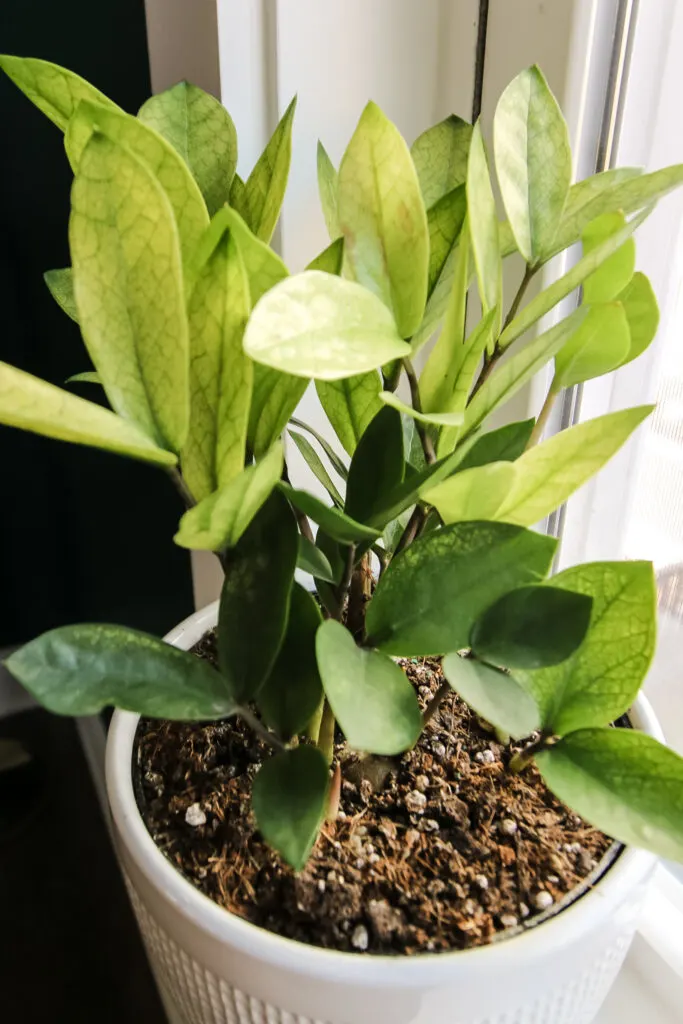
Temperature shocks
In their natural habitat, ZZs live in high temperatures, so temperatures below 45-65 degrees Fahrenheit (7-18 Celcius) can be a big shock.
Naturally, this can lead to your plant freezing from the cold and, ultimately, a ZZ plant losing leaves.
Keep an eye on the temperature, especially in winter. Return your plant to the warm room, exposed to indirect light.
But before that, remove the brown, frozen parts.
The adaptation time will take 1 to 2 weeks to revive your ZZ plant. Any stress can affect the quality of the plant’s health.
Whatever change you make, do it gradually with adaptation. If you want to change location, start with only 2-3 hours per day in that place for a few days.
After a week, move the plant totally. When transplanting, let the new soil adapt for 2 days to where the pot will stand.
In rare cases, high temperatures and low humidity can dehydrate plants and leaves. If you have eliminated all other causes, consider this option as well.
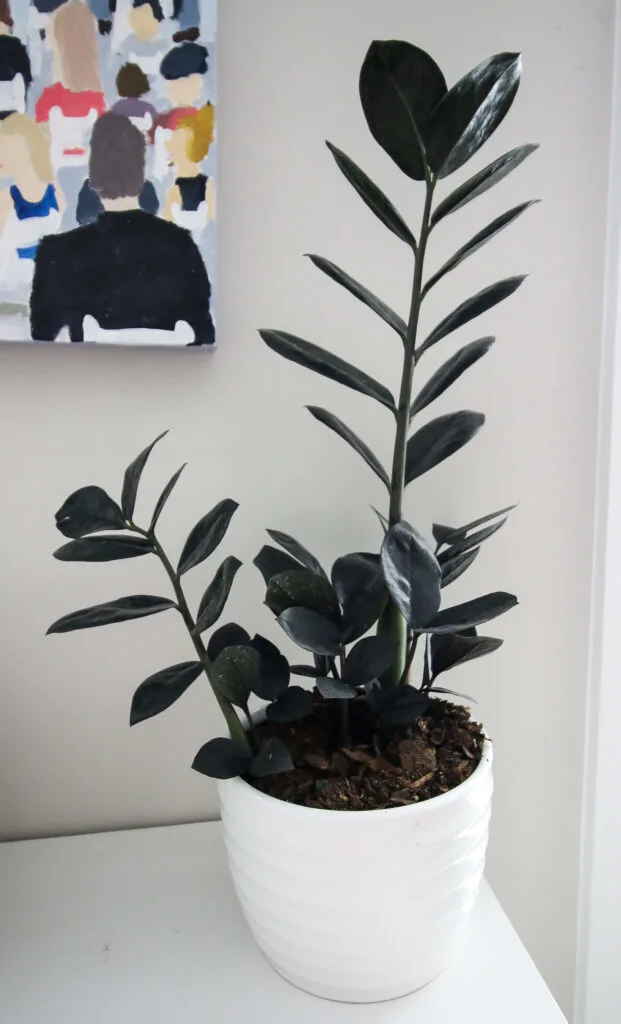
How to fix a ZZ plant that is dropping leaves?
Here are some of the tips to follow if your plant is dropping leaves:
- Water only when the soil is 80% dry. The ZZ plant does not like wet soil. Check the soil with a moisture meter. The wooden stick method is a budget-friendly alternative, which we discussed in our previous blogs.
- A moisture meter is also a good option for solving underwater problems. If the soil is dry, start with lightly watering once a day for a week and get back to the standard schedule. In this way, you will not cause a shock to the plant, and you will optimize the humidity gradually.
- Adjust the temperature and light according to the requirements: room temperature and moderate indirect bright sunlight for the north-facing window.
- Set a reminder to fertilize once a year and not exceed the limit. If you have already overfertilized, repot your ZZ plant in a new pot with new soil.
Last words
Keep a diary for your ZZ plant from day one, where you will record all the positive and negative changes.
Things are much easier to recognize and communicate if written down and notated somewhere. This diary will make you feel like an actual plant parent!
And finally, something that is typically overlooked – inspect the plant thoroughly when you buy it or as soon as you get it as a gift. The first signs of detection are vital. This way, you can prevent further problems, such as ZZ plants dropping leaves!
Any more questions about your ZZ plant?
Thanks for reading!


Hey there, I’m Morgan, a houseplant enthusiast from sunny Charleston, South Carolina. Growing up surrounded by my mom’s lush orchids and African violets, I discovered the magic of bringing nature indoors. Thanks to the pandemic, I delved deeper into houseplants, discovering their power to uplift moods and transform spaces. I’m here to spill all my secrets, helping you pick the perfect houseplant – and make it happy. Let’s keep your plants alive, together! 😊
